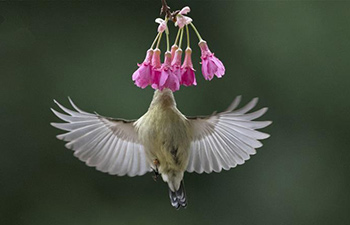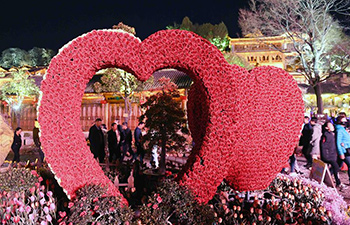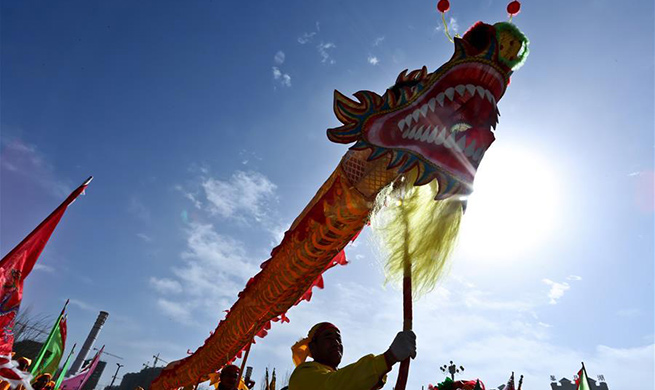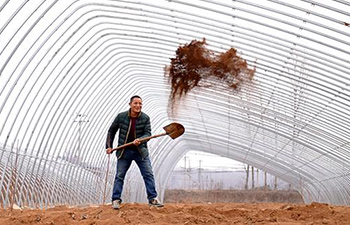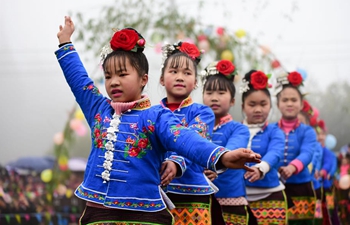URUMQI, Feb. 14 (Xinhua) -- Rich in beautiful scenery, exotic appeal and mouth-watering delicacies, Xinjiang Uygur Autonomous Region has gained luster among tourists during the Spring Festival holiday that ended Sunday.
Xinjiang has received more than 3 million tourists during the week-long holiday, up over 71 percent year on year, according to the regional department of culture and tourism.
The rising number of tourists has brought in more than 3.62 billion yuan (about 530 million U.S. dollars) of tourism revenue to the region, a yearly increase of 74.42 percent.
Traveling has become a new custom around the Spring Festival, or Chinese Lunar New Year, which fell on Feb. 5 this year. It is traditionally a time of family reunions.
To attract tourists, Xinjiang has launched a raft of activities.
In Luopo County in southern Xinjiang, local residents celebrate the festival through a series of traditional events including dragon dances, lion dances as well as performing yangko and stilt-walking.
"The sound of drums signifies our happiness, and I hope to express my delight through my drum," said Ahmet Memetmin, a drummer in the county.
In Urumqi, the regional capital of Xinjiang, the cultural temple fair has attracted a lot of tourists during the holiday with activities including a Chinese zodiac art exhibition, Beijing Opera and traditional dances.
"The temple fair was much more exciting than I thought," said Tian Yuchuan, a tourist from central China's Henan Province.
The abundant resource of ice and snow also plays a significant role in the tourism boom during the holiday.
A ski resort in the city of Altay received about 7,200 tourists on a daily basis during the holiday, hitting record highs since the resort was established.
The Silkroad Resort in Urumqi has received more than 80,000 tourists between Feb. 4 and Feb. 9, up 100 percent year on year.
A carnival featuring ice and snow sculptures, winter sports events and hot springs was held in the tourist attraction of Lake Tianchi, which saw nearly 30,000 tourists between Feb. 4 and Feb. 8.
"I can be totally relaxed seeing the beautiful scenery," said Wang Zhibin, a tourist from northwest China's Shaanxi Province.
The number of tourists to Xinjiang exceeded 150 million last year, up more than 40 percent. It aims to achieve 40-percent growth for both tourist numbers and income in 2019, making tourism a pillar industry and a major source of income for local people.
The regional government has vowed to build Xinjiang into a key area for tourism and a popular destination worldwide.








